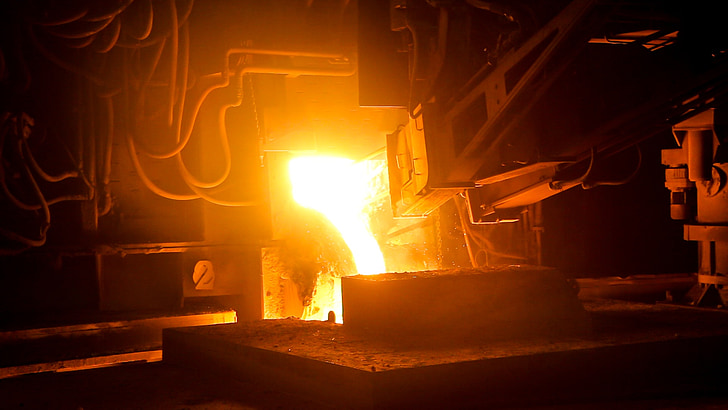Chennai, NFAPost: Resumption of construction activities through Unlock 4.0 following stringent lockdown due to Covid-19, speedy execution of the infrastructure projects, adequate incentivisation for adoption of digital technologies and rationalising duties and taxes are expected to strengthen domestic demand and make Indian steel globally competitive, according to a latest EY – CII report ‘Securing a robust and sustainable future for the Indian Steel industry’.
Launched at the CII – Steel Mart 2020, the report says India was in an expansion mode till March 2020 with a PMI over 50, when the impact of COVID-19, put India to a grinding lockdown. The supply side constraints due to inter-state border closures, along with labour shortage and office shutdowns put the economic cycle to a grinding halt in the month of April, resulting in record low levels.
The weak domestic demand along with large inventory build-up and supply chain bottlenecks caused prices to stay low and prevented rapid production ramp ups. India’s per capita consumption of Steel grew at a CAGR of 4.12% from almost 64kg in FY16 to nearly 74 kg in FY19. India has rapidly expanded its Steel production capacity at a CAGR of 5.26% from 122 MT in FY16 to 142 MT in FY196. To cater to rising demand, Indian Steel capacity is expected to grow to 245mt by 2030.
Impact on Steel prices and profitability
The COVID pandemic started affecting the demand and hence Steel prices from January 2020. US HRC prices had declined by over 20% between Jan-April 2020 and were down by 49% from their September 2018 highs.Although prices have recovered over the last 4 months, they are still below the average prices of 2019.
After declining sharply in March and April, Indian retail steel prices rose by a marginal 1.5% m-o-m in June 2020, and have inched up gradually in following months. Prices are likely to stabilise with an upside bias at least in short term, the report added.
EY India Partner, Business Consulting and Steel Mart, Member, Steering Committee Paresh Vaish said, “The COVID-19 impact has triggered a sharper digitalisation adoption curve across industries and now is the time when Indian steel makers should enhance the penetration of the digital solutions as a key enabler for efficiency, quality and reducing the operating cost.”
He added that there is an urgent need to start investing progressively on green and clean technologies to cut down carbon emissions, and hence, significant incentives need to be provided to both large and small steel plants by the government.
According to the report, the key challenge that lies ahead for the Indian steel industry, already impacted by suppressed steel prices and escalated input prices, is to restore profitability and cash flows, before capacities can be augmented.
High power costs in India and limited availability of some of the essential raw materials such as high-grade lumpy Manganese ore and Chromite, coking coal, steel grade limestone, refractory raw material, nickel, ferrous scrap, among others, make the steel industry less competitive and attractive as a commodity in comparison with other substitutes. Steel players must deploy the latest management techniques to make their capital deployed more efficient with shorter time returns to investments, says the report.
“Domestic demand will remain subdued until sectors such as auto, infrastructure, real estate construction, electronics and consumer durables post a sustained recovery. Consumption of long steel products, primarily used in buildings, construction and capital goods sectors are expected to have a faster recovery as compared to flat steel, where the demand is consumer-driven through end user segments like automotive and domestic appliances,” said EY India Partner and National Leader, Metals & Mining, Saurabh Bhatnagar.
In line with the National Steel Policy, which envisages a capacity augmentation to 300 million tonnes by 2030, major steel players will add capacity, as per their announced plans.
According to the report, fiscal incentives linked to capital, expenditure and sales can act as enablers for players to set up steel mills. Reduction of taxes and cess on steel manufacturing inputs like iron ore and coke for domestic consumption and the introduction of Border Adjustment Tax on import can be introduced less than or equal to the indirect levies by the government to provide a level playing field for domestic steel manufacturers.
Furthermore, to capture the projected steel demand in India, the steel manufacturers will have to calibrate their choice of capital spend with the right technologies and right quantities.
The report also stated that there is a need for continued and rapid investment to fund research on steel as a key sustainable substitute of wood, plastic, concrete and aluminum. Adoption of digital technologies has emerged as a key lever for a sustainable growth.
While larger steel players have made good progress on this front with technologies such as digital twin of blast furnace for optimising operations in real time, artificial intelligence and advanced analytics based digital tools for core operational areas like procurement and supply chain to improve working capital, enhance service levels and save costs, the smaller units are lagging behind. Here, adequate incentivisation by the government will help to ensure quick adoption of digital technologies by small and mid-sized steel manufacturers, thereby, enabling higher productivity and transparency.





